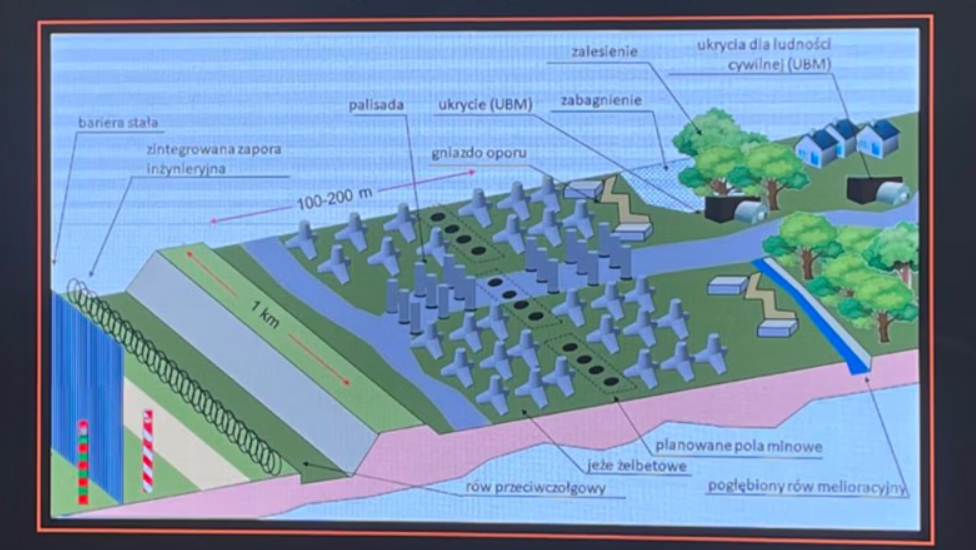- 137 Posts
- 3.16K Comments

 4·1 day ago
4·1 day agoI am really surprised that Chick-fil-A is that popular. I was never very impressed with their food. I mean, they aren’t bad, but they’re pretty unexciting.
https://en.wikipedia.org/wiki/Chick-fil-A
Despite numerous controversies and boycott attempts, the 2022 American Customer Satisfaction Index found that Chick-fil-A remained the country’s favorite fast food chain for the eighth consecutive year, and it has the highest per store sales of any fast food chain in the nation.
And I don’t get In-N-Out, either. I really don’t like their fries, and they have a pretty limited selection. Okay, they’re cheap and they’re open late, and I can understand maybe someone liking the 1950s decor, but…
Make a wiki, point people at the wiki, I suppose.
One thing I did like about Reddit was the wiki feature.

 0·1 day ago
0·1 day agoBut melting like soft-serve ice cream on a scorching summer day was not something its creator imagined would happen. Williams, a professor of art at the University of Richmond, understood the wax to have a melting point well above highs recorded in the District’s sultriest summers.
“The idea was that the ambient temperature, unless it got to 140 degrees, wouldn’t melt the sculpture,” Williams said. “But yeah, I’m not sure that the company ever tried just putting a block of it outside for days in a hundred plus degree weather.”
We’re back to “jet fuel can’t melt steel beams”.

 0·1 day ago
0·1 day agoHidalgo, who is against countries bringing their own units, stressed earlier this year that Paris organizers would not change course.
“I think we have to trust science on two counts,” she said. “The first is what scientists are telling us about the fact that we are on the brink of a precipice. And secondly, we have to trust the scientists when they help us to construct buildings in a sober way that allows us to make do without air conditioning.”
France has the highest percentage of nuclear power of any power grid in the world and its electricity is generated emitting a very low level of carbon dioxide.
https://ourworldindata.org/grapher/carbon-intensity-electricity
According to this, France emits less than a seventh the carbon dioxide per unit of power generated than the US does. We can use seven times as much electricity in Paris as back in the US and still come out ahead on carbon dioxide emissions.

 0·1 day ago
0·1 day agoOn Sunday, a group of 250 Iranian legislators introduced a motion that requires the administration to designate the Canadian Army and federal police forces as terrorist organizations.
The Mounties too, I see.

 6·1 day ago
6·1 day agoThat seems like a weird target.
It doesn’t look to me like it was a refrigerated warehouse, either from the bottled drinks or the thin roof.
I doubt that Ukraine was using it as some sort of secret transit point for military goods – according to the article, Russia had hit the chain’s warehouses before, last year, so it’d hardly be secret. And security at the warehouse probably wouldn’t be fantastic.
The grocery store goods in the warehouse probably have some commercial value, but not an enormous amount.
The warehouse itself doesn’t seem like an incredibly critical target (which is one reason I was looking to see if it was for refrigerated goods, because I could believe that there might not be many of those). Like the grocery chain can probably just use another warehouse, even multiple smaller ones, if they have to.
It probably disrupts everyday life somewhat more than most targets, but it doesn’t seem like it’s on the level of being critical the day electrical power is.
I’ve seen video before of Russia hitting stores, including one last month. So I guess it really is possible that they’d just like to disrupt good distribution, but it seems that seems unlikely to be something that one can really shut down effectively.

 3·2 days ago
3·2 days agoMany of which apparently looked something like this:

 0·3 days ago
0·3 days agoOne last thought- Bakelite seems to love dust. I’m going to dust them regularly, but if there is a way to light them well without making the dust show up well, that would be great.
Are you going to listen to the radios or look at them?
If you don’t need to listen to them, so the glass won’t be an issue, I imagine that you could put them in one of those glass-fronted display cabinets that are designed for this sort of thing, displaying china and such.

 0·3 days ago
0·3 days agoMan survives being lost in California mountains for 10 days by eating berries
I doubt that very much. Anyone for whom 10 days of food is going to be fatal isn’t going to be voluntarily going on hikes.
It’s a social convention for people to eat multiple times a day, but that’s it. You’ve got enough energy reserves to go for a far longer period of time.
https://www.ncbi.nlm.nih.gov/pmc/articles/PMC2495396/pdf/postmedj00315-0056.pdf
A 27-year-old male patient fasted under supervision for 382 days and has subsequently maintained his normal weight.
It’s not mentioned in the research paper above, but the guy’s name was Angus Barbieri.
Now, that guy had a lot of fat on him, which he wanted to lose – most people couldn’t go for over a year without food. He dropped 276 pounds over 382 days to get to 180 pounds. But unless someone is emaciated, they could do 10 days easily. I’ve fasted for over a week myself for the hell of it.
sitting by waterfalls and using his boot to collect water to drink and keep himself hydrated.
That may well have kept him alive, though. Can’t go for anything like that long without water.

 0·3 days ago
0·3 days agoChina is already selling two EVs using sodium ion batteries.
Sodium ion batteries won’t be a general drop-in substitute in vehicles for lithium.
It might be possible to use sodium-ion batteries in place of some not-energy-density critical lithium-ion applications (the way lead-acid is currently used for some lithium-ion applications), and that’d free up some materials for EV use.
https://physics.aps.org/articles/v17/73
However, sodium and lithium atoms have differences, two of which are relevant for battery performance. The first difference is in the so-called redox potential, which characterizes the tendency for an atom or molecule to gain or lose electrons in a chemical reaction. The redox potential of sodium is 2.71 V, about 10% lower than that of lithium, which means sodium-ion batteries supply less energy—for each ion that arrives in the cathode—than lithium-ion batteries. The second difference is that the mass of sodium is 3 times that of lithium.
Together these differences result in an energy density for sodium-ion batteries that is at least 30% lower than that of lithium-ion batteries [1]. When considering electric vehicle applications, this lower energy density means that a person can’t drive as far with a sodium-ion battery as with a similarly sized lithium-ion battery. In terms of this driving range, “sodium can’t beat lithium,” Tarascon says.
In time, sodium-ion batteries will improve, but their driving range will never surpass the top-of-the-line lithium-ion batteries, Tarascon says. He imagines instead that sodium-ion technology will fill specific niches, such as batteries for smaller, single-person electric vehicles or for vehicles that have a range of only 30–50 miles (50–80 km). Weil agrees, but he says that society may have to change the way it views automobiles. “We cannot only point to the technology developers and say, ‘We need more efficiency.’ It’s even more important to stress that we need more ‘sufficiency,’ which is people being satisfied with a small car,” he says.
Yes, my understanding is that this is unexpected behavior. It’s more conventional for these pylons to fall over in groups rather than individually.
For example, last year:
https://newsinfo.inquirer.net/1812393/eyes-on-heavy-cables-after-binondo-pylons-collapse
Philippine Daily Inquirer / 05:46 AM August 05, 2023
The sudden collapse of seven power pylons in Manila’s Binondo district on Thursday afternoon not only prompted calls for an investigation into the immediate cause…
https://apnews.com/article/south-africa-pylons-collapse-pretoria-f0189bea0b6ad846e6d66e2be6d6d172
Published 6:14 AM PDT, April 10, 2023
PRETORIA, South Africa (AP) — At least seven large electricity pylons collapsed onto a highway near the South African capital of Pretoria, causing a multiple-vehicle crash, city authorities and emergency services said Monday.
https://www.news24.com/fin24/economy/pics-another-collapse-of-power-pylons-in-gauteng-20230414
14 Apr 2023
Five electricity pylons collapsed on the R101 in Hammanskraal on Monday night, Eskom confirmed.
This came just a day after seven collapsed on the N4 in Pretoria.
This “lone pylon syndrome” is rather concerning.
Buffalo buffalo Buffalo buffalo buffalo buffalo Buffalo buffalo.
“Buffalo buffalo Buffalo buffalo buffalo buffalo Buffalo buffalo” is a grammatically correct sentence in English that is often presented as an example of how homonyms and homophones can be used to create complicated linguistic constructs through lexical ambiguity.

 0·3 days ago
0·3 days agoWhile the Russians “have decided they can use the Sea of Azov for positioning their ships and launching attacks, Pletenchuk offered a warning to Russia.
“They seem to forget that the Sea of Azov is also quite close to us,” he added.
Or as Nelson put it:
https://blog.usni.org/posts/2020/08/11/fighting-the-fort-modern-wisdom-for-an-age-old-problem
Lord Admiral Nelson’s famous dictum “A ship’s a fool to fight a fort” accurately reflects the immutable advantages of strong, resilient, and offensively capable land-based forces against relatively poorly armored and fragile naval forces.
https://www.amazon.co.uk/Samsung-LH65WMRWBGCXEN-WM65R-Monitor/dp/B07WT547MM/
Here’s a 65" monitor being sold by Amazon UK.
https://www.amazon.com/Dell-C8621QT-85-6-Touchscreen-Monitor/dp/B0CJ5S18TT
Here’s an 85" monitor.
At 190 lbs, though, that’s getting back into the same “I don’t want to haul that up stairs” territory that CRTs were getting into near the end of their days. I think I’d start looking at projectors with nice screens at that point.

 0·3 days ago
0·3 days agoAir defence systems shot down 12 of 16 missiles and all 13 drones launched by Russia at several regions through the night, the Ukrainian air force said.
I guess we’re progressively moving out of the Siemens-Energy-gets-contracts-to-replace-things-violently-interacting-with-Russian-missiles phase of the war and into the Lockheed-Martin-gets-contracts-to-replace-things-violently-interacting-with-Russian-missiles phase.

 20·3 days ago
20·3 days agoThe Army has officially deployed a pair of high-energy lasers overseas to blast incoming enemy drones out of the sky, the service recently confirmed, marking a major milestone for the U.S. military’s ongoing development of futuristic directed-energy weapons.
The 20-kilowatt Palletized High Energy Laser, or P-HEL, “is currently deployed to support the Army’s mission” in an undisclosed location abroad, a spokesman for the service’s Rapid Capabilities and Critical Technologies Office, which manages its directed-energy portfolio, told Military.com.
I think the bigger concern is enemy UAVs wearing shades.
In fact, it looks like it’s almost a decade old.
shattered-pixel-dungeon$ git log -S "CURSED WAND ERROR" commit f1f68163ada4f3e57006fac31d97e6b88c5a5e74 Author: Evan Debenham <[email protected]> Date: Sat May 23 03:40:31 2015 -0400 v0.3.0: improved game crash cursed wand effect shattered-pixel-dungeon$


























Prop planes engaging in gun combat hasn’t been much of a thing since WW2, aside from some sporadic incidents using World War-era hardware:
https://www.wearethemighty.com/mighty-history/the-last-dogfight-between-propeller-airplanes-happened-in-central-america/
But it may make a lot of sense in the context of countering UAVs.